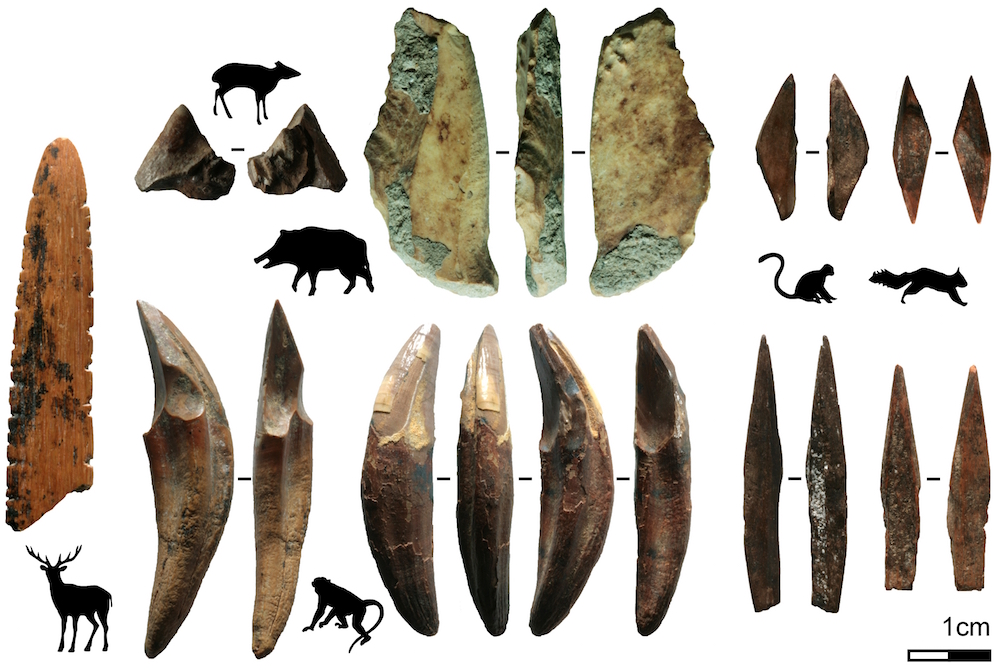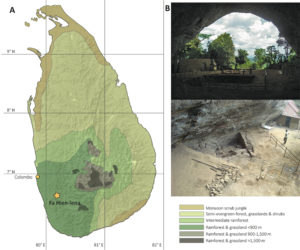
New archaeological research demonstrates earliest projectile technology in the tropical rainforests of Sri Lanka.
An international collaboration between Griffith University’s , the Max Planck Institute for the Science of Human History (MPI-SHH), and the Department of Archaeology, Government of Sri Lanka has unearthed the earliest evidence for bow-and-arrow technology outside of Africa.
In a new paper published today in , the team describes the discovery and analysis of arrow points made of bone which were used to hunt tree-dwelling animals such as small monkeys and squirrels.

The finds were excavated by the Max Planck team from the Fa-Hien Lena cave site, located deep within Sri Lanka’s rainforest.
Once back at Griffith University, lead author Dr , an expert in the study of microscopic traces of tools and symbolic material culture, analysed the artefacts to determine how they were made and functioned in antiquity.
“The size, form, and damage found on many of the bone points were best explained by their having been used as arrow tips to hunt difficult-to-catch rainforest prey, rather than spears,” Dr Langley said.
“The fractures on the points indicated damage through high-powered impact – something usually seen in bow-and-arrow hunting of animals.”
Stone bow-and-arrow technology dates back to about 64,000-years-ago in the grasslands and coasts of South Africa.
However, this Sri Lankan discovery, dated to about ~48-45,000-years-old, is the earliest evidence for arrows made of bone, and of bow-and-arrow use in a more extreme tropical rainforest environment outside of the African continent.
Found alongside the arrow points was a range of other bone and tooth tools, including scraping and piercing tools suitable for making nets or working skins or plant fibres in the tropical setting.

“Evidence for the construction of nets is extremely scarce in artefacts many thousands of years old, making this aspect of the Fa-Hien Lena assemblage a startling find,” Dr Langley said
“We also found clear evidence for the production of colored beads from the bright red, yellow, and metallic silver mineral ochre found in the cave and the refined making of shell beads traded from the coast.”
As co-author Oshan Wedage, PhD at MPI-SHH, states, “Fa-Hien Lena has emerged as one of South Asia’s most important archaeological sites since the 1980s, preserving the remains of our species, their tools, and their prey in a tropical context.”
“Together, these artefacts reveal a rich human culture in the tropics of South Asia which was creating and utilising complex hunting and social technologies to not only survive, but thrive, in demanding rainforest environments,” Dr Patrick Roberts of the Max Planck Institute said.
“These findings provide some of the first detailed insights into how our species met the extreme adaptive challenges it encountered across tropical Asia during global human expansion,” said Professor Michael Petraglia, also of The Max Planck Institute.
“They show how resilient and creative Homo sapiens has been in expanding its territories and encountering the new flora and fauna of foreign lands.”







